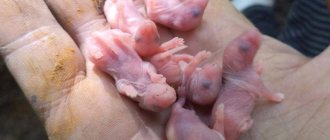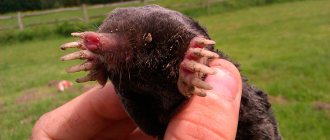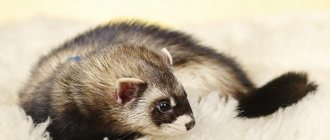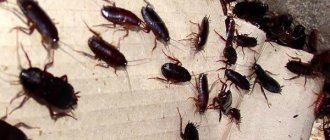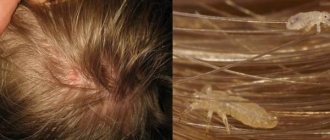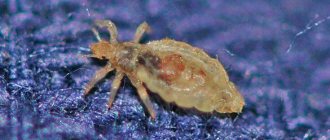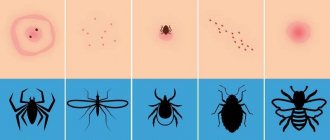Nature and animals06/14/2012
It would seem - what’s so scary about rats? Let's say that not everyone thinks they are cute and touching little animals - but at the sight of some unfortunate rodent they squeal heart-rendingly and climb onto tables and chairs...
Don't tell me. We know of at least five reasons that justify this reaction.
They'll still get you
Monsters from classic horror films are scary not only and not so much because of their bloodthirstiness. They are almost unstoppable - this is what makes us squeeze into our chairs. You can lock yourself up as many times as you like and take any precautions you want, but if Jason from Friday the 13th, Freddy from A Nightmare on Elm Street or some "Woman in Black" is hunting you, you have a chance... yourself you understand.
It's the same story with rats. Even though you might hurt yourself trying to figure out how to protect your home from them, if a rat decides to come visit you, he will do it, rest assured. It costs nothing for a rat to climb up any ventilation. Let's say you provided for this possibility and plugged all the holes. However, as it turned out in the course of one study (.pdf), it costs nothing for a small rat to lift an object weighing more than a pound (~0.5 kg; approx. mixstuff.ru), if it has suspicions that the parquet flooring is more appetizing on the other side .
They can squeeze into tiny holes - no more than a quarter of the rat's girth in diameter. This is an almost finished T-1000 from the second part about the Terminator: cover it with a steel net and it will leak between the bars before you can blink an eye.
They have another favorite way to penetrate our homes - through pipes. Moreover, four centimeters in diameter is quite enough for them. And yet, they are champion swimmers. Combine these two skills and you get an animal that might one day emerge from your toilet. And such cases are not uncommon.
Let's say you manage to block this opportunity for them - so what? If they have already taken on you, they will gnaw a separate entrance for themselves through the wall, and they will not lose anything. Nature (apparently to keep us on our toes) has endowed rats with incredibly strong, even for rodents, jaw muscles. And while some bunny is peacefully gnawing on the bark of a tree, give these small creatures brick, cement and even lead. Their incisors grow throughout their lives, and they have no choice but to constantly grind them down.
Difference in appearance
The shades of fur in rodents can be similar. And the body structure too. But there are significant differences.
| Options | Rats | Mice |
| Body size | Up to 25 cm length | 7-10 cm |
| Adult weight | 220-250, males 450 g | 45-85 grams |
| Muzzle shape | Long muzzle, small eyes | Triangular muzzle, large, nimble eyes |
| Ears | Small, slightly covered with villi, triangular | Round ears, hairless and mobile |
| Paws | Powerful, muscular, with webbed toes | Small, flexible, with tenacious claws. |
| Tail | Short, bristly ½ of body length | Long, thin, ¾ length |
| Wool | Rough, sparse, visible skin | Silky, soft, grows in a thick cover. |
They multiply at an incredible rate
Another type of movie monster is distinguished by the fact that it breeds a population of its own kind at an incredible speed. Usually these are alien creatures who intend to fill the entire Earth with themselves in record time. They may appear as shapeless amoebas made of flesh and teeth that reproduce by division, or as hideous winged monsters that lay eggs in human bodies. One thing is constant - they all multiply very quickly.
This group includes James Cameron's Aliens, John Carpenter's The Thing and... that's right, our rats.
One pair of rodents manages to give birth to up to 6,000 cubs in 2–3 years of their life. Less than three months pass before new offspring also begin to reproduce, and so on. Moreover, it is not customary for them for the younger generation to go to seek a better life in foreign lands. If there is enough food, they will not move until they flood the whole city.
By the way, many regions that skimped on pest control during the recession experienced a real rat baby boom. Britain's rat population now stands at around 80 million, up 200 percent from 2007. And even with all modern methods of rodent control, in New York there is at least one rat per person.
Rats mating
At home, to avoid uncontrolled reproduction, it is better to keep animals of different sexes in separate cages. Only when a rat is in heat is a male placed next to it. For reliable results, they can be left together for 10–16 days.
These rodents do not have vaginal bleeding during estrus, so you can understand that the female is ready for mating by her behavior:
- The animal becomes restless, shakes its ears, and moves chaotically around the cage.
- When stroking the spine area, the rodent begins to arch its back.
- Mucous discharge appears from the genitals.
In front of the male, the rat can perform a kind of dance: spin in place, stretch out its hind legs, arch its back, imitating actions during mating.
Mating occurs mainly in the evening or at night, since the animal in nature leads a twilight lifestyle. The mating is repeated several times with a break for food, games, and grooming each other's fur.
After pregnancy occurs, the male should be transplanted into his own cage.
They are the champions of hide and seek
Movie monsters are masters of camouflage: they either attack from around the corner or manage to remain unnoticed in plain sight. Cthulhu lurks at the bottom of the sea, Freddy Krueger exists as an abstract concept in the nightmares of his victims, and Predators can literally turn invisible.
And here everything is written like rats. This doesn't mean that finding a rat in your home is a difficult task. This means that even a team of trained specialists armed with the latest technological developments may be powerless here.
We know what we're talking about. A group of scientists, hoping to learn something new about the life and movements of rodents, took a single rat named Rasputin to a lonely island near New Zealand, where there had been no rats before. Previously, they took a DNA sample of their ward. Then they put a special electronic collar on the rat, and for four weeks they studied where the rat sleeps, where it eats, what routes it moves, and everything like that.
Then the scientists decided for some reason to catch this rat. Despite the traps (there were more than three dozen of them), despite all the baits and tricks, despite the efforts of two specially trained dogs, nothing worked out for them. Worse, at some point the radio signal from the device attached to the animal stopped receiving, and hopes of finding the rodent disappeared like smoke.
Surprisingly, Rasputin was still found: 18 weeks later and on another island - about half a kilometer from where he was released. Nobody knew that rats could swim so far.
Behavior of rats after birth
These rodents are very caring mothers. During the first two days after birth, you should not touch the rat, try to remove the cage, and especially not touch the babies. The female, no matter how calm she was before pregnancy, will defend the nest and may bite. In order not to lose contact, you can offer her her favorite treat through the cage and speak to her in a calm tone.
After some time, the babies definitely need to be examined, to check whether all the pups were born healthy, are well-fed, and are developing well. This should be done with medical gloves so as not to leave a human odor on your pets. In case of deviations, you should immediately consult with ratologists. To check the cubs, it is better to lure the mother out of the cage with a treat.
Offspring
Over time, when the babies begin to move, the rat's behavior should change, but some females remain aggressive until the litter is deposited.
They are indestructible
This quality unites many movie monsters, especially serial ones: you kill them, you kill them, and by the time the next part comes out they are as good as new again.
Well, what do rats have to do with it, you ask. Common rodents. No hint of immortality. They can be anything they want, but considering them invincible is too much.
However... What is the surest way to kill a rat? I? So here it is. When rats find food they aren't sure is safe, they taste (.pdf) it first—just a little. And if they feel somehow wrong, they don’t touch this food again. They are well aware of our insidious plans and know how to destroy them.
In addition, we are increasingly faced with a completely new variety of these creatures, which scientists have already nicknamed “super mutant rats”, which are no longer affected by practically any poison.
Younger age
From the fourth day, the development of baby rats occurs at a rapid pace.
- 4th day, ears are open, the pups begin to distinguish sounds, hear rustling;
- the sixth body is covered with soft dark down;
- 8 teeth are trimmed, except for the main incisors.
After 10 days of life, puppies become active. They crawl well and master the territory. If these are pets, they need to be touched more often so that the animals grow up tame. However, during the game they should not be left unattended, since coordination of movements is not yet developed, children can fall to the ground from the table, from any hill.
How baby rats grow day by day
Watching newborn rat pups for the first time, you will be extremely surprised at how quickly their development occurs. Unlike a person, who needs a fairly long period of time to become a more or less independent being, baby rats, already 4-5 weeks after birth, have the qualities of an adult. This is largely due to the quality of the female's milk, which contains up to 9% protein, 9.5% fat and about 4% lactose. By comparison, human milk contains only 1.5% protein, 3.2% fat and 6.5% lactose.
Did you know? Newborn rat pups have very weak intestines, which causes problems with bowel movements. The female gives them a stimulating massage, licking their bellies.
If we consider the development process of newborn rat pups day by day, it happens something like this:
- 1 day - all that the pink, well-fed caterpillars can do is actively search for the mother’s nipple and saturate the body with nutritious milk;
- Day 2 - babies continue to eat, sleep, and sometimes make a faint squeak;
- 4–5 days - by this time, a change in the color of the skin occurs, on which spots of the future color of the fur coat can be seen. By the way, there may even be small hairs all over the body. By the fifth day, the animals’ ears open, they can already hear everything that is happening around them;
- 8-10 days - babies are already quite active. Although the coordination of movements is not yet fully formed, they can already start fights for the mother's nipple. Sometimes it happens that with a large brood, the place at the “feeding trough” is occupied by stronger animals, and weak ones can simply die without food. To prevent this from happening, you need to move the saturated rat pups into a separate enclosure for a short time, giving the other kids the opportunity to drink milk. In this case, you should definitely wear medical gloves, and provide the displaced children with a warm heating pad. The baby's body is covered with neat soft fur;
- 12–14 days - by this age, the cubs are already teething, and many of their eyes are also opening. The appearance of an additional sensory organ makes rat pups more inquisitive. Now they can’t sit still - the animals are trying to explore everything that surrounds them. At the same time, the mother is constantly on alert, trying to gather the babies together;
- Day 16 - it is already possible to distinguish the sex of the pups, since the nipples of the females are clearly visible. Thanks to their already grown teeth, babies begin to actively try their mother’s food and not only it, but also any objects encountered along the way;
- 21 days - by the end of the third week, complementary foods can be introduced; some babies already manage to switch to adult food by this time, eating what is intended for their mother;
- Day 28 - by the end of the fourth week, you will already have fully formed baby rats. They feed on their own, and by this time the mother rat stops producing milk. Kids actively explore everything around them and happily make contact with people. It is interesting that in natural habitats, at the age of one month, a street rat pup is already capable of independently obtaining its own food and hunting.
How many days do it take for eyes to open?
Small rodents open their eyes around the end of the second week. For some it happens a few days earlier or later. The ability to not only sniff, but also examine the world around them makes babies even more active and inquisitive. They constantly strive to get out of the nest, but the caring female does not lose her vigilance, moving the cubs closer to herself.
The eyes of rats are slightly bulging and located on the sides of the head. This structure gives rats a large overview - the animals, without turning their heads, can see everything that is happening around them, as well as above and below. In this way, Mother Nature made sure that animals could see danger approaching them in time in the form of birds of prey and animals.
Body type
Depending on the shape of the body, the length of the tail and the shape of the ears, all decorative rats are usually divided into three main varieties.
Standard
This type of animal has a proportional body covered with hair, including paws, tail and ears. The tail, wide at the base and tapering towards the end, is approximately equal to the length of the body. The ears are round in shape and located at the top of the head. The eyes are round, protruding and shiny. The long mustache is evenly distributed across the cheeks.
At exhibitions, they don’t take into account what color the rats’ fur is. The main criterion for its evaluation is the qualitative characteristics that indicate the health of the rodent. These include:
- shine;
- tight fit;
- uniform distribution over the entire surface of the body.
Animals that have genetic mutations are removed from breeding.
Dumbo
Dumbo rats get their name from the distinctive shape of their ears, which are reminiscent of the flying baby elephant from the Disney cartoon of the same name. Wide and round ears are located on the sides of the head, due to which it looks slightly widened and flattened.
In some individuals, the back of the head may protrude slightly, but this should not be noticeable.
The back part of the body of this species of rodent is expanded, which gives the body a pear-shaped shape.
Dumbos come in a variety of colors, but black and white rats are the most common. In this case, the design looks like a hood.
Tailless (Manx)
The Manx rat has a more rounded and shorter body shape, unlike representatives of other varieties. The hind legs are longer than the front legs, the tail is completely absent. Thanks to this, the rat looks unusual and resembles a rabbit.
Many people choose tailless pets for aesthetic reasons. But you should know that most of these rodents develop pathologies of the hind limbs and organs of the genitourinary system.
When buying a Manx rat, you need to make sure that the absence of a tail does not cause discomfort to the rodent when moving.
pros
Domestic decorative rats are very smart, loyal, affectionate animals. They like to play, curl up on your lap, on your shoulder or in the bosom of your shirt and fall asleep there. They lick like a cat or a dog. They respond to a nickname, perform a number of commands, and dance.
When teaching your rat to perform a series of commands, be patient. Although rats are smart and easy to train, this does not mean that your rat will willingly fulfill all your wishes. The reason for this may be either inability to train on your part or the individual character of a particular animal. Even among people, not everyone becomes a professor.
Comfort
Your pet's life will be much more fun and varied if you take not one, but two rats (same-sex; if opposite-sex individuals cohabit, you will have to seriously think about creating a rat farm). It takes a small amount of money to maintain a rat, so from a financial point of view it is not burdensome. Two same-sex rats get along well with each other.
First, your rat needs to choose a home. The cage should be spacious (minimum size for one rat 60x30x40 cm), made of metal rods with a distance between them of no more than 12 mm. To drain liquid, there is a tray at the bottom of the cage. Some people use aquariums to keep rats. This is a bad choice: poor ventilation contributes to the accumulation of carbon dioxide below, and there is also significant inconvenience during cleaning. Rats are very jumping animals (the jump height reaches 80 cm), so, among other things, the aquarium will have to be covered with something.
So that the rat can have fun in your absence, equip the cage with various devices: tunnels, stairs, ropes, etc. Forget about the wheel. Leave this entertainment for mice and hamsters. Rats don't like to spin the wheel.
There must be a nest in the cage - the animal must have a secluded place to sleep. Be sure to let the rat walk around the room. However, keep an eye on her constantly: so that she doesn’t get into dangerous places, don’t chew on wires; so that they don’t step on it or sit on it.
To prevent the cage from smelling in the apartment, it must be cleaned at least once a week and disinfected once a month. In addition to the unpleasant odor, dirt in the cage can cause various diseases.
Use paper or sawdust for bedding. Do not overuse newspapers and magazines - printing ink contains many harmful substances. The sawdust should not be small. Wood dust can get into your eyes and ears and cause allergies.
Make sure that the water in the cage is always clean and fresh.
In general, rats are not picky about their living conditions. The only danger for them is draft and sun. Therefore, choose a location for the cage taking these factors into account.
Location
Where the black rat lives is a very interesting question. The favorite habitat for the rodent is sea vessels. Rats live side by side with humans and eat identical food. They spread around the globe thanks to water transport.
The black rat is less inventive than its relative the Pasyuk. Content with little. Settles near reservoirs and rivers. But it is less attached to water than the gray one. Does not build nests in the ground, avoids water, but if necessary, swims quite a long distance. It does not dive because fish, fry, and amphibians are of little interest to it.
Willingly settles in the forest, fields, and edges. The lifestyle is more reminiscent of voles. In urban areas, it prefers sewers, abandoned buildings, garages, garbage cans, and entrances. Can live in a person’s house, occupying the upper floors or attic.
Prevention
When a rat has no problems and is not sick, its eyes, nose and mucous membranes are absolutely clean. When there is porphyrin in your pet's nose (for no reason), your pet requires the attention of a specialist. At the veterinary clinic, they will take tests and examine the animal, as a result of which it will be possible to understand whether everything is normal or whether there is a disease. In the latter case, the doctor will prescribe treatment at home or prescribe procedures at a veterinary institution.
To prevent the animal from developing bad symptoms, the owner must follow the following rules:
- the cage with the pet should be located in a quiet, calm place - the animal needs comfort;
- The animal should not be stressed, make noise, shout or wake it up abruptly - this will scare it;
- the rat must be fed healthy and wholesome food;
- You constantly need to monitor your pet, its condition, skin and mucous membranes.
